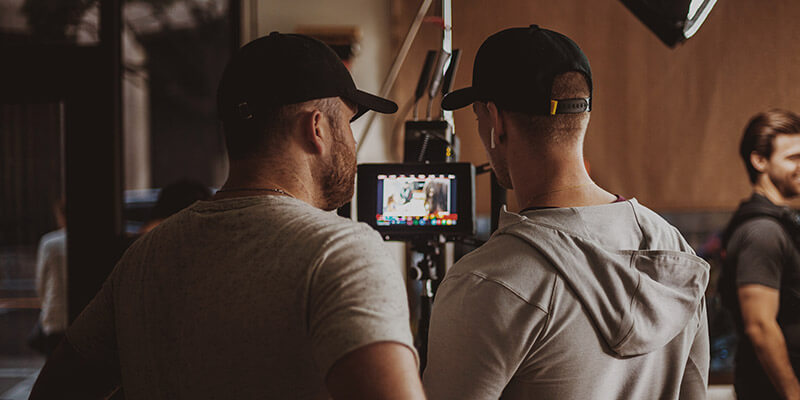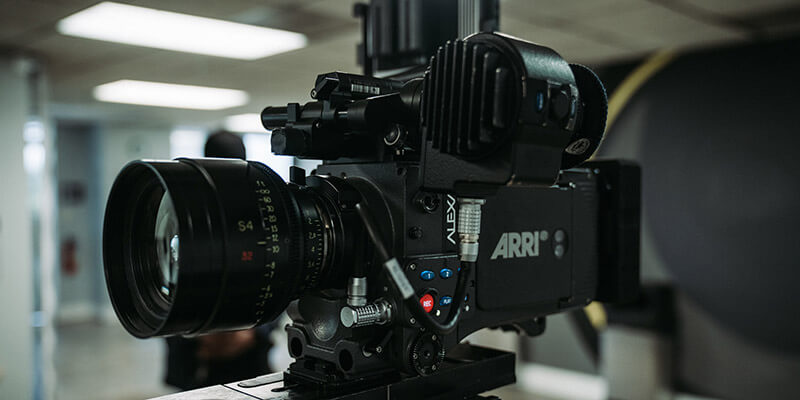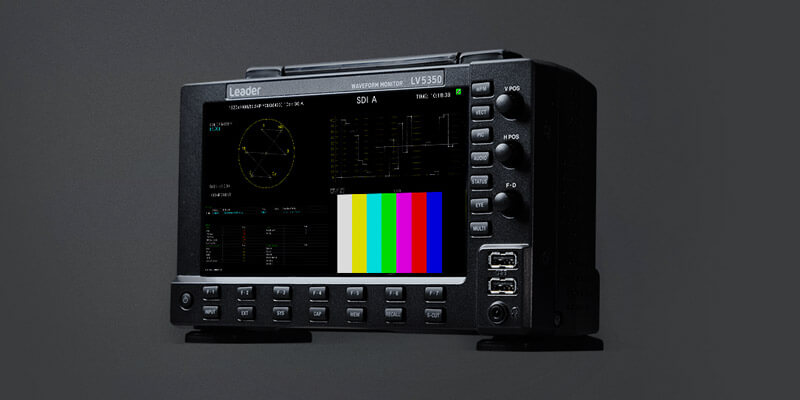
Keith Putnam is a video production professional who has spent the past several years as a Digital Imaging Technician (DIT) and second unit Director of Photography and on the CBS series Bull and Madam Secretary. He’s also worked on productions such as Teenage Mutant Ninja Turtles (2014), the Foo Fighters: Sonic Highways documentary (2014), and The Wolf of Wall Street (2013).
As a DIT—sometimes associated with a “data wrangler”—Putnam acts as a virtual bridge between camera and post-production crews by ensuring and maintaining the integrity of digital film workflows. And when it comes to video production, digital workflows are everything: specific tasks include video routing, image management, live color grading and on-set dailies generation.
Almost everyone involved in a large video production has worked with a DIT at one point or another. But not everyone is familiar with the unique and complex set of technical, creative, and gear requirements of these unsung on-set heroes.
MASV sat down for a Q&A with Keith to talk about what goes into one of the most vital—yet relatively unknown—on-set functions there is.
Jump to section:
- What is a Digital Imaging Technician (DIT)?
- How did the role of a DIT come to be?
- Who DITs liaise with most often?
- How does a DIT fit into the overall production workflow?
- How does one become a DIT?
- What are some aspects of the job you wish you knew when starting out?
- Can you describe a ‘normal’ DIT workflow?
- What tools are required for the job?
- How do you see the role evolving?
- How have you improved your practice over the years?
Send Large Video Files
Send and receive up to 15 TB of large media assets over the cloud with MASV file transfer.

Photo by Gordon Cowie on Unsplash
What is a Digital Imaging Technician (DIT)?
I usually describe the Digital Imaging Technician as the guardian of the director of photography (DP)’s creative vision. The DIT’s job is to be a bridge from production to post-production and sometimes beyond, to exhibition (whatever that may mean in context). A DIT uses a variety of gear and technical and creative skills to make sure that what the DP wants the image to look like is translated and preserved accurately, from the moment the frame is captured to the moment it’s displayed to an audience.
How did the role of a DIT come to be?
The position evolved back in the late 90s and early 2000s, alongside the development of 24-frame digital cinema cameras as they splintered off from broadcast video cameras. In the beginning, productions shooting digitally hired video engineers to tune cameras, manage the signal, and color grade the image in real time as it was recorded to videotape. They had to get close to nailing it! This was before both file-based capture (which allows for immediate content ingest and near-real time editing) and log gamma-encoding (a form of color encoding that can provide richer images) existed. So the luxury of non-destructive, metadata-based color grading was only a dream.
Note: destructive editing or color grading alters the original image, while non-destructive keeps the original intact.

Photo by CineDirektor FILMS from Pexels
But the shift to file-based recording of raw data and log-encoded RGB files came along in a rush in the mid-’00s, breaking through in a huge way with cameras like the RED One and ARRI Alexa. Technicians managing digital cameras in the era of the Samsung D20/D21, the Thomson Viper and the Panavision Genesis began using the Digital Imaging Technician title to distinguish themselves from video engineers. That was partly because of the differences in content the two types of techs worked on:
- Video engineers work more in broadcast and live video (30 fps) world.
- DITs in 24 fps content such as film and television.
It was also because of the new paradigms of file-based media management and non-destructive metadata-based color grading.
Who DITs liaise with most often?
There are very few departments on a production we don’t interact with, since we’re sort of a “mission control” that everything flows through—plus we typically have the best-looking (or at least most accurate) image on-set.
Camera & Lighting
While it’s probably obvious that the DIT spends a lot of time talking to the DP, we also are critical collaborators with the gaffer (or chief lighting technician) and key grip (the leader of the production’s grip department. Grips are technicians that create and maintain all camera-supporting mounts and equipment, including dollies, cranes, or ladders). When lighting is being focused and shaped, the place to be is at the DIT cart. DIT carts are sophisticated rigs kitted out with high-tech equipment such as laptops, SDI routers, waveform monitors, and multiviewers. DITs constantly talk to camera assistants throughout the day, and frequently the camera operators as well.
Hair & Makeup
The hair and makeup team and wardrobe crew often come to the DIT cart to take a color and contrast-accurate look at the actors.
Art Department
The art department (responsible for props, set decorations, and scenics) does the same around their areas of interest.
Production
We frequently serve the needs of producers and directors in terms of providing deliverables and referencing previously shot material—though if the production has a VTR operator, some of that becomes their responsibility.
Post-Production
On the post-production side, we’re in frequent contact with the post-producer or post supervisor, along with key contact people at the lab (if there is one) such as dailies operators and colorists. Sometimes we are privileged enough to be intimately involved with the final coloring session or sessions for the project.
Send Large Video Files
Send and receive up to 15 TB of large media assets over the cloud with MASV file transfer.
How does a DIT fit into the overall production workflow?
1. Pre-production
The Digital Imaging Technician has two main areas of influence in pre-production. The first is working with the DP to establish the intended look for the project, which can mean building or choosing the master LUT (or “Look-Up Table”), a tool that receives a log signal and applies corrections from color grading software before outputting the signal for viewing. We also consult on the choice of camera body, lenses, and filtration—essentially a sounding board and resource for anything related to what’s seen on-screen.
Second, the DIT is the point person for establishing and maintaining workflows regarding the video signal and the management of camera-original media. In that role we’re talking with producers, post-production staff, the studio or network, the rest of the camera department, and VTR operator (when there is one). Expect lots of meetings with all these people. Sometimes we’re effectively a radio frequency spectrum consultant, since so much of what happens on-set involves wireless transmission and reception, and a huge chunk of that interfaces with our role.
2. Principal Photography
When shooting, the DIT must ensure the image is correctly exposed in the context of the final intended look. We receive a log-encoded signal from the camera, measure it on a waveform monitor, and then apply our color work to it in real time, usually making Color Decision List (CDL) corrections to the image and then applying the master LUT, all non-destructively. We save the CDLs in a way that enables dailies operators to easily and efficiently find the correct look to apply to the media when producing dailies and editorial media. The DIT also distributes the live-graded signal to monitors all over the set, either directly or through the VTR operator, so everyone can see what’s being shot in as close to a finished format as we can achieve on-set.

LV5350 waveform monitor by Leader
We’re often responsible for setting and/or pulling the iris on the lens, so we usually have single-channel wireless iris control units on our cart, too. On some productions the DIT is effectively the lab, as well, so they may also generate the dailies and editorial media at the same time as everything listed above.
This is most common on commercials, reasonably common in features, and less common in episodic, but it really depends on the needs of the production.
3. Post-production
During post-production, the DIT often helps the colorist and DP interact with each other when the DP can’t directly attend color grading sessions. The DIT may also be asked to call up references from the shoot, help troubleshoot issues which weren’t apparent during the shoot, or even just answer questions about where various assets can be found.
Send Large Video Files
Send and receive up to 15 TB of large media assets over the cloud with MASV file transfer.
How does one become a DIT?
There are a lot of paths toward a career as a digital imaging technician. At a bare minimum you’re going to need pick up a pretty deep knowledge of filmmaking principles and technology. It’s helpful to know a lot about both cinematography and post-production since the DIT sits squarely in the middle of those two worlds. Good computer skills are a must, as is at least basic video engineering knowledge.
Ultimately, though, this industry is entirely about relationships of trust. So the true, if unhelpful, answer as to how to get hired as a DIT is: get someone to trust you and hire you as a DIT. A more helpful answer is: seek out and build relationships with people working in the business. Find your people. It all flows from that.
What are some aspects of the job you wish you knew when starting out?
One of the main things I wasn’t aware of when I started that became important was how to assess the relative power of the DP on a given production. Any influence you have as the DIT comes directly from the DP’s amount of power or control, and that can vary wildly. Especially in episodic TV, the ultimate say over almost everything lands with producers who aren’t anywhere near the set—so it’s easy to get caught between serving your DP and serving your DP’s bosses.
Send Large Video Files
Send and receive up to 15 TB of large media assets over the cloud with MASV file transfer.
Can you describe a ‘normal’ DIT workflow?
A standard DIT workflow involves the following:
- Receive a log-gamma image from the camera
- Assess the signal from an engineering standpoint
- Apply creative and technical color correction to the image
- Display the image for yourself and others
- Provide metadata deliverables to whoever is processing the footage for dailies and editorial (which could be yourself)
- If the DIT also manages media, the workflow involves:
- Gathering the exposed magazines from cameras
- Ingesting the footage
- Generating a checksum to make sure you’ve copied every last bit
- Making multiple backups of the media
- Quality controlling media as much as possible with the time you have available
- Making sure the media is passed along to post-production
Send Large Video Files
Send and receive up to 15 TB of large media assets over the cloud with MASV file transfer.
What tools are required for the job?
One thing a DIT cannot live without is a set of professional-grade production monitors capable of extremely high color and contrast accuracy, and which are calibratable so they can be kept in that state of accuracy over a long time. You and your DP must be able to trust that what you see on your DIT monitors is as close to exactly what will be seen anywhere else with correctly calibrated displays.
For the color grading portion of the job, you’ll need grading software capable of making CDL changes in real time, and the LUT boxes I mentioned earlier. That also implies the necessity of a computer to run the software and interface with the LUT boxes. If all you’re using the computer for is live grading, you can get away with a relatively low-powered machine, but if you’re also media managing—and even more so if you’re processing dailies yourself—then you’ll want more horsepower and storage.
You’ll need a waveform monitor to assess the various video signals you’re dealing with. You’ll almost always need a video router, because you’re accepting lots of video signals, and sending them to lots of different places. And, of course, you’ll need a robust cart for all of these things to live on and to transport them around.
How do you see the role evolving as film and TV production becomes more remote and cloud-based?
At its core, the basic functions of the role haven’t really changed—regardless of the tools involved, your job is to ensure the DP’s vision is protected. But in a remote or cloud workflow certain responsibilities are tacked on. Now you may have to be even more of a network engineer than previously, and a lot of your time will likely involve troubleshooting why various people around the world are having trouble seeing what they want to see. You’re still the conduit from set to the wider world. Now there’s just more internet involved, really.
How have you improved your practice over the years?
I think I’ve improved at my job in many ways over the years. Efficiency, obviously, increases with experience. I’d say my creative skills have improved tremendously—my senses of color and lighting, in particular. I’ve learned a lot about communicating effectively with a wide variety of people under stressful circumstances.
Perhaps most importantly, I’ve learned how to delegate some responsibility and how to say no to some things. We’re all too willing to exploit ourselves and be exploited by an industry which is often much more physically, emotionally and psychologically demanding than is necessary, so learning to speak up for your needs becomes more and more important as you age.
Send Large Video Files
Send and receive up to 15 TB of large media assets over the cloud with MASV file transfer.
Conclusion
We’d like to thank Keith for taking the time out of his schedule to help write this piece. You can check out some of Keith’s work on his website at High Water Media or on his Instagram.
A digital imaging technician interacts with large digital media files on a daily basis. It’s imperative that these files not only look as intended but are backed up and archived correctly for easy access by other members of the production team. This requires a file transfer service capable of moving heavy, uncompressed videos in short order.
It’s the exact solution Shadow Magic Studios was searching for until they found MASV. Read our customer story with Shadow Magic CEO, Jordan Maltby on his experience using MASV transfer and MASV Portals to move footage from an on-set DIT station to a remote post facility.
“We test drove a bunch of different file transfer platforms, and MASV was the only one that always worked without fail”
MASV is the fastest way to send and receive massive video files. Send uncompressed dailies, locked pictures, DCPs, and more with MASV. Sign up today and receive 20 GB for free towards your next transfer.
Need to Send Large Files?
Create a free MASV account to get started